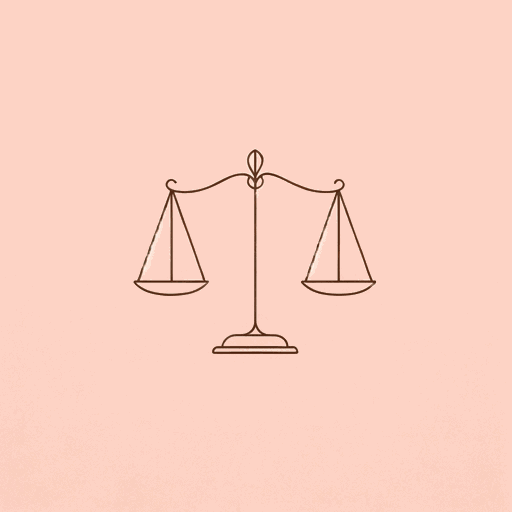51 pages • 1 hour read
Patrisse Khan-Cullors, Asha BandeleWhen They Call You a Terrorist
Nonfiction | Autobiography / Memoir | Adult | Published in 2018A modern alternative to SparkNotes and CliffsNotes, SuperSummary offers high-quality Study Guides with detailed chapter summaries and analysis of major themes, characters, and more.
Summary and Study Guide
Overview
When They Call You a Terrorist is a nonfiction memoir published in 2018 by the American authors and activists Patrisse Khan-Cullors and asha bandele. Subtitled A Black Lives Matter Memoir, the book chronicles Cullors’s early life in Los Angeles and her role in cofounding Black Lives Matter, a decentralized racial justice movement established after George Zimmerman’s acquittal in the Trayvon Martin shooting. The book’s title refers to accusations of terrorism lobbed at Cullors and her fellow Black Lives Matter leaders, despite the authors’ contention that the real terrorists are those who inflict pain and suffering against Black men and women with the power afforded to them by the state.
This study guide refers to the 2018 edition published by St. Martin’s Press.
Plot Summary
In 2016, after Micah Johnson kills five police officers during a racial justice protest in Dallas, an online petition seeking to label Black Lives Matter a terrorist organization garners over 100,000 signatures. Cullors points out that Johnson was not a member of any Black Lives Matter chapters, nor was the protest in question organized by Black Lives Matter. Cullors traces contemporary efforts to discredit Black Lives Matter as terrorists to the FBI’s aggressive COINTELPRO operations targeting civil rights groups, feminist organizations, and anti-Vietnam War demonstrators in the 1960s and 1970s.
Here, the narrative flashes back to Cullors’s childhood in Van Nuys, a predominantly Latinx neighborhood in Los Angeles. As the War on Drugs ramps up, the police are a constant presence on her block. To Cullors, the police seem to exist solely to hassle young non-White males like her two older brothers, Monte Cullors and Paul Cullors. At age 19, Monte is arrested for attempted robbery. The alleged robbery takes place during a manic episode caused by Monte’s undiagnosed schizoaffective disorder. Cullors will later learn that Monte was brutally beaten by police officers in the hours following his arrest. Meanwhile, Cullors graduates from a charter high school devoted to social justice and the arts. At a race-conscious labor think tank, she trains to be a community organizer.
After his release from prison in 2003, Monte’s mental condition is somewhat stabilized. Yet with a felony record, Monte struggles to obtain employment. Reluctant to see his criminal record jeopardize his mother’s Section 8 housing, he moves in with his ex-girlfriend Cynthia, a drive-by victim who is paralyzed from the waist down and thus cannot provide adequate care for him. In 2006, Monte is arrested again after a minor automobile collision with a White motorist. When the motorist insists on calling the police, Monte suffers a manic episode during which he grows extraordinarily angry yet never touches the motorist. Nevertheless, the motorist claims Monte caused her to fear for her life, leading the police to arrest him on terrorism charges.
Cullors and her family are prohibited from seeing Monte for three weeks after his arrest, a period during which he is beaten, confined, and drugged by guards and police officers. At his court date, the family learns for the first time of a likely-fabricated weapons charge Monte received during his first stint in prison. Given that the terrorism charge is his third strike, Monte now faces life in prison. Cullors frantically raises $10,000 through her growing activism network to hire a criminal defense attorney. The attorney successfully strikes the weapons charge from the record, but Monte must still carry out 85% of an eight-year sentence.
In 2012, George Zimmerman shoots and kills a Black teenager named Trayvon Martin in an act the shooter claims was self-defense. Cullors’s outrage over the shooting is mirrored by Americans across the country. Eventually, the state of Florida answers these calls for justice by trying Zimmerman for second-degree murder. The following year, when Zimmerman is acquitted, a despondent Cullors responds to a Facebook post by her friend Alicia Garza with the hashtag “#BlackLivesMatter.” With the help of Brooklyn organizer Opal Tometi, the three women begin to build a movement based around this three-word phrase.
About a year later, Black Lives Matter garners its first significant national exposure during the Ferguson, Missouri protests over Michael Brown’s shooting death at the hands of a police officer. The following year, shortly after Sandra Bland’s suspicious death in police custody, Black Lives Matter stages a protest at the Netroots political conference, during which Cullors and other women interrupt a candidate forum attended by US Senator Bernie Sanders.
On Election Day 2016, Cullors is ecstatic at the passage of a California proposition legalizing marijuana, the first entry point for many people of color in the criminal justice system. Yet this excitement quickly fades as Donald Trump defeats Hillary Clinton in the presidential race. Cullors ends the book by reflecting on the immense challenges ahead for her movement in the Trump Era.

